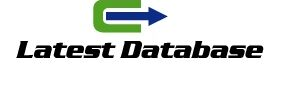Implementing an inbound marketing strategy in the manufacturing sector can be challenging, especially for companies accustomed to traditional prospecting and sales methods. However, the results achieved by overcoming these barriers are extremely rewarding. Let’s explore the most common challenges and practical solutions to address them.
1. Resistance to organizational change
Many industries are rooted in traditional practices and face resistance from employees and leaders to adopting new approaches.
Solution:
Educate your team: Hold internal workshops to explain the benefits of inbound marketing and how it complements existing methods.
Demonstrate results: Start with a pilot project and share initial results, such as increased traffic or qualified lead generation.
2. Long and complex sales cycles
In the industrial sector, purchasing decisions involve multiple influencers and long analysis periods.
Solution:
Create personalized nurturing flows: Use turkey email list email automation to send educational and technical content throughout the customer journey.
Targeting decision makers: Produce specific materials for different audiences, such as engineers, purchasing managers and directors.
3. Lack of digital expertise
Companies that do not have a marketing team check out the main digital marketing trends for experienced in digital strategies face difficulties in executing inbound marketing efficiently.
Solution:
Hire a specialized consultancy: A consultancy brings the necessary experience to implement and manage effective campaigns.
Train the internal team: Invest in training so that the team learns how to use tools and understand metrics.
4. Producing relevant technical content
Creating content that is simultaneously egypt data informative, accurate and accessible can be challenging in highly technical industries.
Solution:
Collaborate with in-house experts: Engineers, technicians, and other professionals can help create rich, technically accurate content.
Use varied formats: Combine white papers, how-to videos, and case studies to reach different audiences.
5. Difficulty measuring return on investment (ROI)
Many industries have difficulty evaluating the results of inbound marketing, especially when the metrics are not clear.
Solution:
Set clear KPIs: Define metrics like organic traffic, lead generation, and conversion rate to measure success.
Use integrated tools: Platforms like RD Station and HubSpot provide detailed reports to track performance.
6. Integration with legacy systems
Many industries use old ERPs and CRMs that do not communicate well with modern inbound marketing tools.
Solution:
Use integrators: Tools like Make (formerly Integromat) or Zapier help connect legacy systems to modern platforms.
Upgrade gradually: Migrate to more robust systems that support integrations and automations.
7. Limited Marketing Budget
Companies that view marketing as a cost rather than an investment may be hesitant to allocate resources to inbound marketing.
Solution:
Prioritize high-impact actions: Start with campaigns focused on SEO and email marketing, which have a lower cost and solid results.
Prove the value: Show how inbound marketing reduces customer acquisition cost (CAC) and improves ROI over time.

